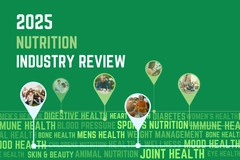
- Industry news
Industry news
- Category news
- Reports
- Key trends
- Multimedia
Multimedia
- Journal
- Events
- Suppliers
Suppliers
- Home
- Industry news
Industry news
- Category news
- Reports
- Key trends
- Multimedia
Multimedia
- Events
- Suppliers
Suppliers
WHO launches Shift Framework tackling malnutrition and nutrition inequity

15 Jun 2022 --- The World Health Organization (WHO) is launching its Shift Framework, a tool aimed at bringing nutrition equity across the globe and creating better food environments.
The framework is the product of collaboration between the WHO, EAT, the Karolinska Institute and Uppsala University. It aims to complement existing initiatives and actions to address malnutrition and noncommunicable diseases.
“Differences in health and nutrition status between groups are socially and systemically produced and disproportionate in their distribution, avoidable and unfair,” Dr. Meena Daivadanam, professor and senior lecturer in global health at Uppsala University and lead investigator for the Shift Framework tells NutritionInsight.
“Disproportionate because the most vulnerable – those from low socio-economic status, with poor education, income, unemployment, those who are more vulnerable such as women, children etc. are affected more than their more well-off, educated or less-vulnerable counterparts.”
 The framework involves four steps that stakeholders can engage in.“Leaving no one behind”
The framework involves four steps that stakeholders can engage in.“Leaving no one behind”
Daivadanam explains that one of the greatest factors driving nutrition inequity lies in social determinants, influenced by local, commercial and political determinants. Poorer social determinants are root influences in the spectrum of malnutrition, from undernutrition to obesity, described as the “double burden”.
Because of this, there can be overlap between these two poles both within a specific region and even within an individual within an area where nutrition and food inequity are endemic.
“Inequities and vulnerable or disadvantaged populations exist in all regions irrespective of their income status. If we don’t design health and nutrition interventions and policies with a specific equity focus, it is the poor and vulnerable who are detrimentally affected,” she adds.
“If we are serious about ‘leaving no one behind’ in our race to achieve targets laid down for achieving the sustainable development goals, focusing on equity must be a given and not a choice for governments.”
Onus on governments
The successful implementation of the Shift Framework is dependent on stakeholder participation. Nonetheless, the onus lies on government’s to work with the framework.
“States have a responsibility to enable every individual to access and avail of healthy and nutritious food – the environment and the policies have to make this a default option for each and every individual rather than a choice which is dependent on so many factors.”
Though there are many strategies to attract the proper stakeholders within a given region, participatory approaches appear to work best, Daivadanam outlines.
Participatory approaches, such as consultations, hands-on activities, and co-design and co-production of the programs give stakeholders their “stake” within the process and allow them to see the changes as they occur.
The only places where the Shift Framework may be difficult to implement are in conflict areas or areas where those who should be the stakeholders may cause the nutrition inequities. Often, local conflict can have unforeseen and global results, such as the war in Ukraine. Though not used in conflict situations so far, Daivadanam states that she believes it does have the potential for implementation by humanitarian organizations and nonprofit organizations in those environments. Nutrition inequity produces a spectrum of malnutrition, from undernutrition to obesity.
Nutrition inequity produces a spectrum of malnutrition, from undernutrition to obesity.
Delving into stakeholder action
The Shift Framework involves four interconnected steps focusing on the interaction between human behavior and the surrounding food environments. Essentially, what drives diet and nutrition is what is available and accessible in the local environment. To alleviate local nutritional inequalities, users must address the deeper issues of malnutrition.
The four steps of the Shift Framework are Map, Engage, Transform, and Monitor. According to its creators, each of these steps can be used independently to tailor the Framework's implementation or to check its progress. Each step guides the user in the appropriate actions to take.
These steps are further grouped into three phases that allow stakeholders and users to monitor and implement change for short-term, mid-term and long-term outcomes. The Framework can be used in any region provided that inequity exists and local governments are willing and active stakeholders in affecting change.
“The states have a responsibility to enable every individual to access and avail of healthy and nutritious food – the environment and the policies have to make this a default option for every individual rather than a choice which is dependent on so many factors,” states Daivadanam.
Utilizing the framework
The steps were created to be easy to complete via the yes and no questions and corresponding actions that should be taken for each.
In the first step, Map, the user identifies the areas in which inequities exist. If they have done that, they can move on to step two. If not, the user will need to conduct further research and collect more data. In step two, Engage, the user identifies and engages the relevant stakeholders for the area and reflects upon each stakeholder’s needs, capacities and power to enact change.
In step three, Transform, the users and stakeholders identify evidence-based interventions, such as policy actions or incentivization, determine the necessary resources and decide on the best ways to implement them. In the final step, Monitor, the users and stakeholders monitor the effectiveness of their interventions and tailor or even employ new ones.
The WHO has long raised the alarm over malnutrition concerns, describing it as the world’s leading causes of death and illness. As part of its targets, it has called for better food environments and anti-obesity initiatives.
By William Bradford Nichols











